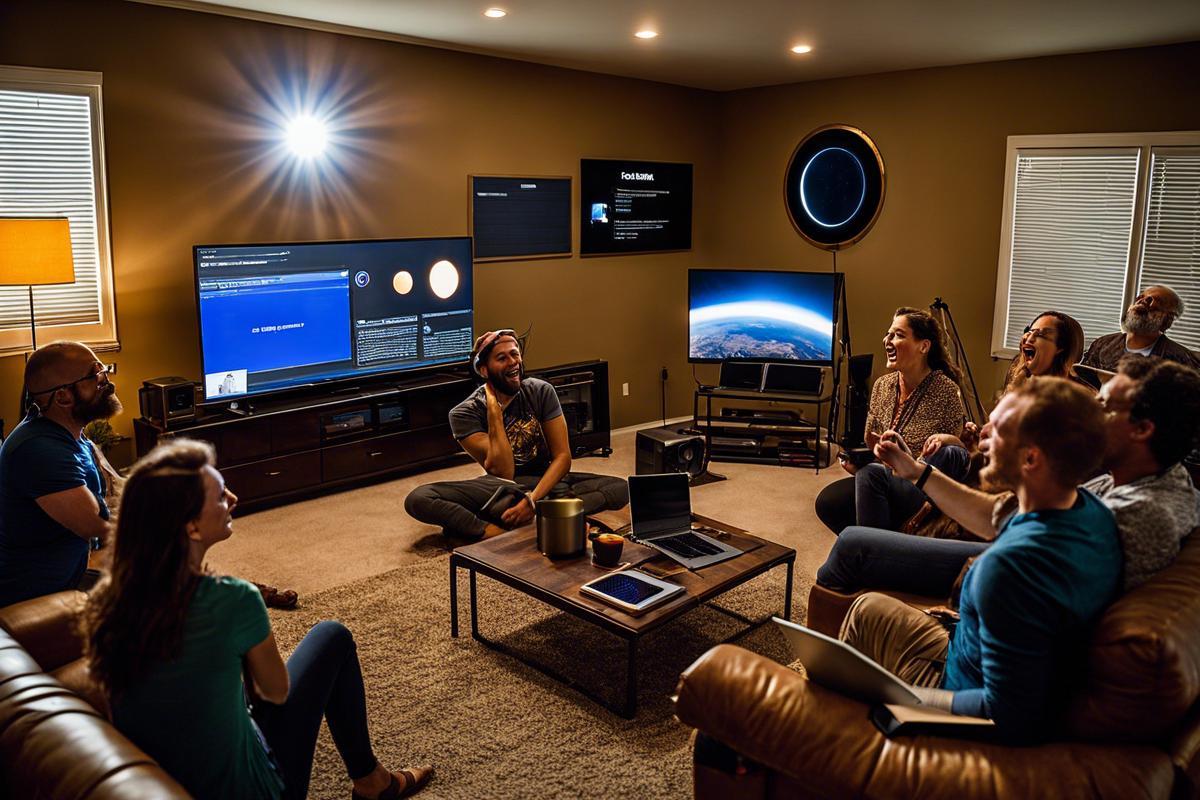Anticipation is building for a truly enchanting celestial spectacle: the total solar eclipse of April 8, 2024, promises to amaze spectators around the globe. In an effort to make this astronomical event accessible to everyone, NASA has announced that it will livestream this cosmic dance between the Sun and Moon on YouTube. Whether you’re an astronomy enthusiast or just curious, find out how you can take full advantage of the eclipse, wherever you are.
Official announcement from NASA
There NASA officially confirmed its plan to broadcast thetotal solar eclipse from April 8, 2024 live on his YouTube channel. This initiative is part of its commitment to educate and inspire the public about astronomical phenomena. The live transmission will allow millions of people to witness this rare astral conjunction, without having to travel towards the path of the eclipse.
What is a solar eclipse?
A solar eclipse occurs when the Moon passes in front of the Sun and obscures part or all of it for an observer on Earth. This extraordinary event only occurs during a new Moon, when the Sun and Moon are in conjunction as observed from Earth. Viewers can witness various types of eclipses – total, partial or annular – depending on their geographic location and the alignment of celestial bodies.
Why is the April 8, 2024 eclipse special?
The solar eclipse scheduled for April 8, 2024 is particularly notable because it will be a total eclipse, providing daytime darkness for a few precious minutes to those in the path of totality. This event is even more special because it will cover a wide swath across North America, connecting Mexico to Canada, providing a unique opportunity for millions of people to witness the total eclipse.
How to access the live stream
To access the live broadcast of NASA, those interested will simply have to go to the official YouTube channel of the space agency. It will be accessible to everyone, conveniently, with no prior registration required. This broadcast will allow spectators to enjoy an unobstructed view, in complete safety, and information commented by experts.
Tips for the Optimal Viewing Experience
A optimal viewing Live eclipse viewing will require a good, stable internet connection. Spectators can also wear special solar eclipse glasses if they choose to view the event outdoors. Additionally, adjusting the video quality to the highest setting on YouTube and connecting to a larger screen, like a TV or projector, can significantly improve the experience.
Other ways to experience the eclipse
While live streaming is a great way to participate in the event, there is no substitute for experiencing a direct observation. For those who can travel to the area at all, it is advisable to plan ahead given the possible influx of tourists. Astronomy apps and websites can help find the best location for direct observation and indicate the exact time when the eclipse will be visible.
The educational and scientific scope of the diffusion
NASA’s live broadcast of the eclipse serves not only as entertainment but also as aeducational tool. Schools and institutions can use it to teach students about Earth and space sciences, while stimulating an interest in astronomy. Additionally, the data collected during the event can provide valuable insights for researchers.
Community Engagement and Local Events
The eclipse is an opportunity forcommunity engagement. Museums, observatories, and astronomy clubs can organize local events to watch the eclipse together. These gatherings encourage the sharing of knowledge and passion for astronomy, while strengthening community ties.
Safety Preparations and Viewing Tips
It is crucial to follow safety precautions when observing a solar eclipse. Never look directly at the Sun without proper eye protection, and this goes even during the total eclipse. Special ISO certified glasses are essential to protect the eyes from the harmful rays of the Sun.
Cultural and historical impacts of eclipses
Solar eclipses have always had an important place in human history and culture, arousing fear, admiration and curiosity. Ancient civilizations often interpreted these phenomena as divine signs or omens. Recognize thecultural impact eclipses allows us to better appreciate the importance of these celestial events in our collective history.
NASA’s live broadcast of the April 8, 2024 solar eclipse presents a golden opportunity to immerse yourself in the beauty and mystery of the universe. Whatever our location or our knowledge of astronomy, this event reaffirms our common fascination for the sky and the cosmos that surrounds us. Prepare to experience a historic moment with the global community, comfortably seated in front of your screen or under the open sky.

